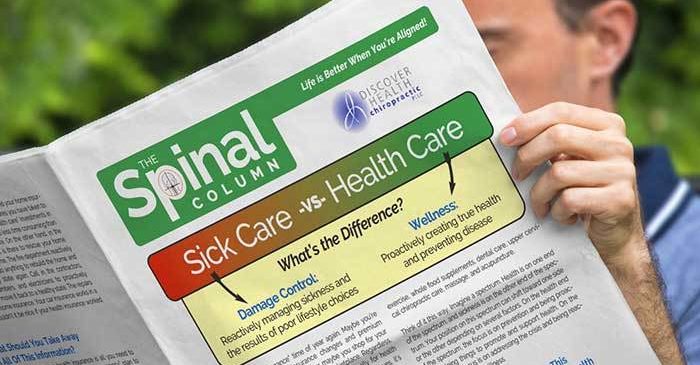It’s the “health insurance” time of year again. Maybe you’re hearing about health insurance changes and premium increases from your employer, or maybe you shop for your own health insurance through the marketplace. Regardless, let’s talk about why health insurance isn’t really for health care. It’s for sick care. Yes, there’s a difference. And yes, it’s crucial you understand the difference.
Table of Contents
What is Sick Care?
“Sick care” is damage control. The obvious need for “sick care” is in emergency situations, such as accidents, traumas, and other life-or-death acute conditions.
Management of chronic conditions like heart disease, cancer, and diabetes is also included in “sick care.” The main goal of “sick care” is to stop you from getting worse. The secondary goal is to make you feel better but not necessarily correct the cause of your problem. The “sick care” model rarely focuses on moving you back towards health and preventing the problem from occurring again.
What is Health Care?
“Health care” is wellness. It’s everything that helps you move towards health and prevent problems from occurring again or even in the first place. This includes things like nutrition, exercise, whole food supplements, dental care, upper cervical chiropractic care, massage, and acupuncture. Think of it this way. Imagine a spectrum. Health is on one end of the spectrum, and sickness is on the other end of the spectrum. Your position on this spectrum can shift toward one side or the other depending on several factors. On the health end of the spectrum, the focus is on prevention and being proactive in doing things to promote and support health. On the sick end, the focus is on addressing the crisis and being reactive to the disease or illness.
So, What Does This Have To Do With Health Insurance?
Health insurance covers treatment that is deemed “medically necessary”- medicine, surgery, treatments, therapies, etc. related to acute cases of illness and chronic conditions associated with disease. In other words, you have to be sick or have a medical reason (medical necessity) to warrant these treatments. Even “well visits” and “preventive medicine” are more so early detection of a problem, rather than true wellness and prevention.
The “sick care” model is a very expensive system, and the cost will continue to rise as the baby boomers continue to age. The “health care” model tends to be significantly less expensive; however, many people think it’s more expensive than the “sick care” model because wellness care is not usually covered by insurance. A portion of wellness and prevention services may be covered by insurance, but the full spectrum is not. Even though these services are essential for living a healthy lifestyle and lowering your risk factors for chronic diseases, they are not typically considered “medically necessary.” Heart disease, cancer, and diabetes account for approximately 70% of the causes of death in the U.S. annually. Also, treatment for these chronic conditions accounts for 75% of health care costs. Imagine how much better our health as a nation would be if we focused our time, energy, and finances on proactively creating true health and wellness, rather than reactively managing sickness and the results of poor lifestyle choices.
Think of it this way. Taking care of your home, like getting your chimney inspected and updating your home’s electrical wiring, are ways to proactively prevent fires and create a safe and healthy home. This is like ”health care” for your home, and your home insurance does not cover these preventive measures you have taken to make your home safer. These minimal “health care” investments in your home are much less expensive and less time consuming than repairing a damaged home after a fire. On the other hand, in the event of a fire, the fire department is there to rescue your home. This is like “sick care” for your home. The fire department reactively stops the fire, but they don’t do anything to rebuild the home and move it back to a healthy state again. Call in the contractors, builders, carpenters, plumbers, and electricians to proactively rebuild your home and move it back to a healthy state. The repairs are covered by your home insurance. Your car insurance works in a similar fashion. Wouldn’t it be nice if your health insurance worked this way too?
So, What Should You Take Away From All Of This Information?
Don’t be tricked into thinking health insurance is all you need to protect your health. It is a “break-in-case-of-emergency” plan to help you reactively cover the “sick care” expensive end of the spectrum. To experience health on a consistent basis, you must regularly engage in the things that proactively promote health and wellness (i.e. an awesome diet, daily exercise, and connecting with wellness professionals, such as upper cervical chiropractors, personal trainers, dentists, acupuncturists, and massage therapists).
Schedule a consultation today and let our doctor determine if you have a upper cervical neck misalignment that may be preventing you from functioning at your best. Take charge of your health and unleash the power of your body.
Article credit to: www.pittsburghuppercervical.com/category/wellness/


